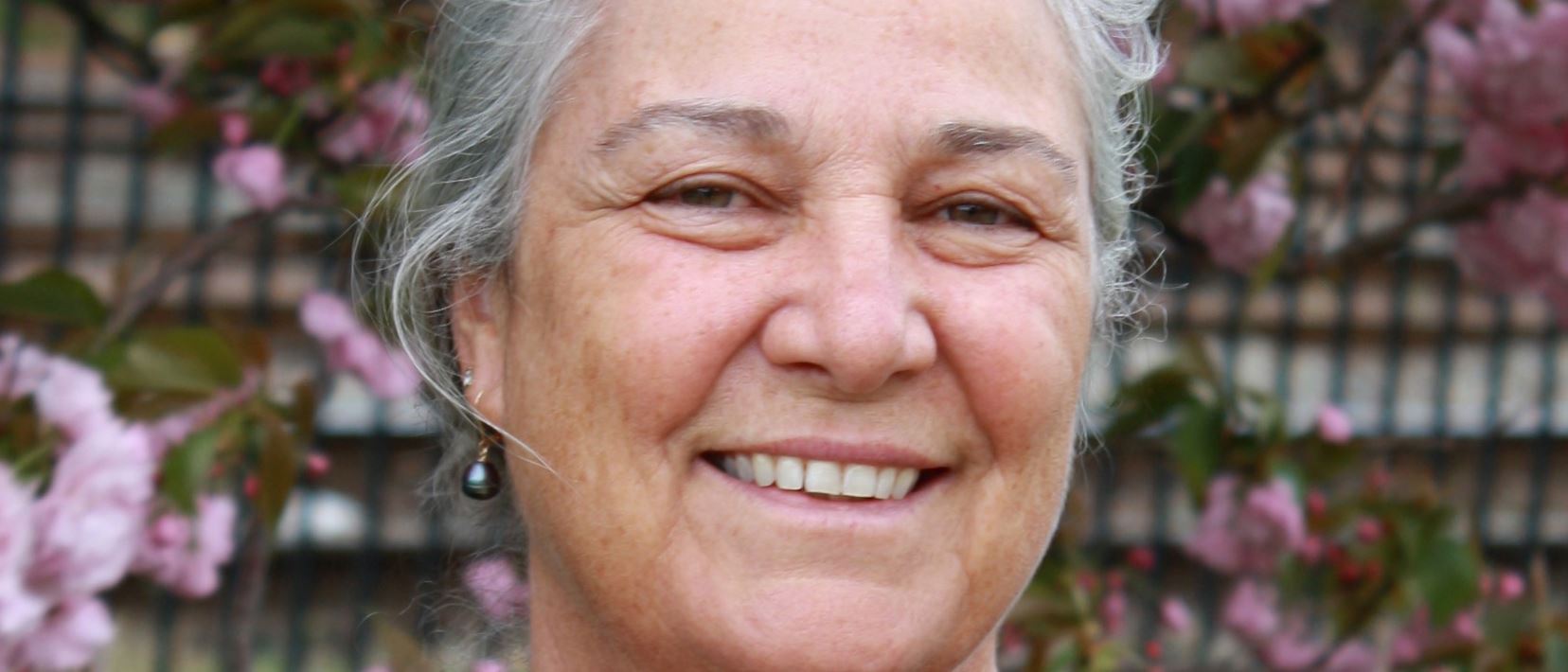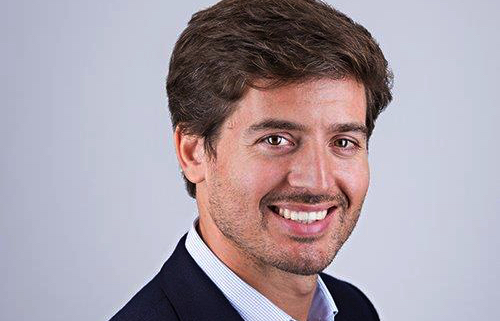At Tembo Paper, our work to reduce plastic waste occurs in a much wider ecosystem of environmental NGOs, corporations, and authorities – each doing their bit to take us towards a more sustainable world. Staying abreast of the freshest ideas and innovations in this sphere is something that we know is vital.
To this end, we recently spoke with Nina Goodrich, Executive Director at GreenBlue and its sister organisation, the Sustainable Packaging Coalition (SPC). GreenBlue is a not-for-profit that gives businesses the science and resources to become more sustainable, and the SPC is a membership-based collaborative that harnesses the power of industry to make packaging more sustainable.
Both organisations are leading voices in the movement for packaging sustainability in the US, and with her background and expertise in sustainability, innovation, and research & development (R&D), Nina is internationally recognised as an influential thought-leader in the packaging industry.
We spoke about her own work with SPC, and picked her brain on the wider issues of marine microplastics, recycling infrastructure, and the key aspects of a transition to sustainability.
“Catalysing the conversation”
Nina was working in R&D back in 2002 when GreenBlue was founded by William McDonough and Michael Braungart. “Icons,” in Nina’s words, “who talked about circularity and green chemistry before it became popular.” Throughout the following decade, Nina made a name for herself by leading sustainability and R&D teams at Amcor, Alcan Global Pharmaceutical Packaging, and the Guelph Food Technology Center.
And in 2012, Nina was asked to move down from Canada to lead GreenBlue in the US.
“Since then, I’ve been here as Executive Director for GreenBlue and the SPC. We now have 470 industry members across the complete value chain – from raw materials suppliers to the converters, brands, and retailers. We also have consultants and academics and government folks, too.”
For Nina, the mission of both organisations is to “catalyse the conversation” around sustainability, and to help industry stakeholders to “create action towards making changes.” Hers is a committedly collaborative approach to sustainable change, which brings together voices from across society.
“We always remain science-based, and our approach is really to bring people together to work on solutions. I think there’s a role for all types of organisations within this mission.”
The Four “Buckets” of Sustainability
The science-based approach has led Nina’s team to articulate a typically precise vision of sustainability – one that moves beyond the blurry and vague buzzwords that dominate the field.
“When I think of sustainable packaging, I don’t just think of recyclable packaging. There’s a big difference between those two terms, and yet most consumers would assume they’re synonymous. Everybody’s focusing on recycling and recyclable content – but recyclability is just one small part of sustainability.”
Instead, Nina sees sustainability in “four major buckets” – sourcing, material health, optimisation, and end-of-life – which defines particular stages within the life-cycle of products and their packaging.
Sourcing looks at how and where the material originated, whilst material health is concerned with the chemical composition of the product and its effect on environmental and human wellbeing. According to Nina, material health is too often overlooked. And optimisation is another aspect that gets ignored – i.e. ensuring that packaging is optimal for its job and doesn’t damage the product or reduce its shelf life.
“When you’re transitioning between material categories,” she explains, “one of the things you want to make sure you don’t do is increase food waste. The carbon footprint of the packaging is almost always very small compared to the product. Food waste is a huge contributor to greenhouse gases, so it’s really important to ensure that we don’t damage the product or shorten the shelf-life.”
“What comes first,” she adds, “is the umbrella of carbon in the environment. That should be our North Star. If we’re moving from something that’s got a much smaller footprint and does the job to something that has a much bigger footprint but is recyclable, I’m not sure that’s always a step forward.”
The Role of Governments and Infrastructure
End-of-life management is where the popular and well-known aspects of environmental health come in: things like recycling, composting, and biodegradability. However, these aspects – as Nina underlines regularly throughout the interview – are only possible with the correct infrastructure in place.
“We always see companies claiming that their product is recyclable. But the truth is that it’s only recyclable if it can be sorted, sold, and repulped (in the case of paper). Unfortunately, only 50% of Americans have equal access to trash and recycling. That’s an astounding figure!”
This is where the government has an important role to play, according to Nina.
“Equalising the ease of recycling in line with trash is what the authorities can help with, either through incentives or through landfill bans. I don’t know how this is ever going to work unless governments step in and say to the companies, for example, that they have to invest in recovery technology.”
In fact, Nina points out that the importance of infrastructure has recently been thrown into stark view. Coronavirus has had a profound effect on one part of the recycling industry, as it has dramatically reduced the amount of bottles being returned to recycling deposits.
“People have to hoard all of their bottles, because keeping recycling plants open could potentially expose workers to COVID-19. So, all of a sudden, the supply of deposit recycled material is gone overnight. There’s no supply coming in anymore.”
Here, private recycling stakeholders can’t be expected to go it alone. For Nina, governments need to intervene to stabilise market volatility and incentivise the production of new technologies (infrastructure) to circumvent these types of emerging obstacles. “I think we need more of a shared responsibility model globally, which consists of governments and corporations working together.”
The Problem of Plastic
This brings the conversation around to the general problem of plastic. According to the UN, eight million tonnes of plastic every year ends up in the ocean – or, as Nina says, “eight dump truck loads a minute.” However, the media, private sector, and governments have only recently started paying attention.
“I hope that we get to the realisation that we’re the ones who didn’t think this through,” Nina says, referring to the global system in which the US and Europe ship recyclable waste to developing countries for processing. “Again, it’s an infrastructure problem and a financial problem – I mean, who thought it was a good idea to give them all of our waste? Much of it just went in garbage dumps near the ocean.”
“We created this problem, but it’s most important to stop putting it in the ocean. In fact, microorganisms colonise small pieces of plastic and it tends to sink. If we can stop putting it in, it will eventually sink to the bottom and be buried. This will make it less harmful than today. But we must stop putting it in.”
Whilst she is unambiguous on the tragedy of the marine microplastics crisis, her perspective on the use of plastics in industry – and the single-use plastic ban – is balanced. “What we see in our oceans is terrible, but we need to use this as a picture for other types of pollution. Will we learn a lesson from being motivated about single-use plastics and apply that to other types of materials?”
Referring to that fundamental “bucket” of sustainability again, optimisation, she urges caution: “If the ban moves from single-use plastics to all plastics, we could have a problem. Plastics are very functional in protecting food – and some of the multilayer plastics have a very small environmental footprint but are not ‘recyclable’. If we eliminate plastics completely, we will significantly increase the carbon footprint required to package the products that were in plastics.”
Regardless of material, according to Nina, all packaging – recyclable, biodegradable, or not – needs to have a really solid and considered end-of- life strategy.
Looking Ahead
For Nina and the Sustainable Packaging Coalition, the issue of packaging sustainability is not as black-and-white as much of the public discourse around the subject paints it – or as initiatives like the EU’s directive on single-use plastics might imply. Instead, Nina again brings nuance, and an admission which may seem anathema to anyone not as well-acquainted with the subject as her.
“Maybe no material is inherently bad,” she concludes, reflecting on our conversation about plastic, “it’s what we do with that material that matters most.”
As companies shift wholesale away from plastic, Nina wants to see a more strategic mindset. “What exactly is your business trying to do? Do you simply want to be ‘not-plastic’, or are you aiming to become recyclable or renewable? If it’s just to remove or reduce plastic, that’s a different motivator.”
The implication is that, as Nina says, whilst “there are lots of single-use plastics we don’t need,” we shouldn’t see this as the only problem to fix. Instead, she emphasises that collection infrastructure and end-of-life strategies should be designed into every product that is created. That means gaining a better understanding of what sustainability options are feasible for you – globally, nationally, and locally.
“Know your market, and learn what infrastructure exists in your area. For example, if you own a small business and want to use 100%-compostable salad bowls – but there’s no composting infrastructure where you sell – that’s not the best strategy for becoming more sustainable.”
According to Nina, the private sector must design much better to ensure optimal end-of-life processes, but the state has a role to play in providing the infrastructure required. As such, to Nina’s mind, the future of sustainability comes back to that which defines GreenBlue’s mission: collaboration.
Thank you to Nina Goodrich for taking the time to speak with us. You can learn more about GreenBlue here and the Sustainable Packaging Coalition here.
If you would like to learn more about our biodegradable paper straws and our paper straw production line technology, contact Tembo Paper today.
In the case of paper-based plastic straw alternatives, Nina supports 100% compostability. To achieve this, straw manufacturers like Tembo must transition to using bio-based glue in their products. While paper straws are certainly better than single-use plastic straws, there is still work to be done to keep improving the product's environmental credentials.


